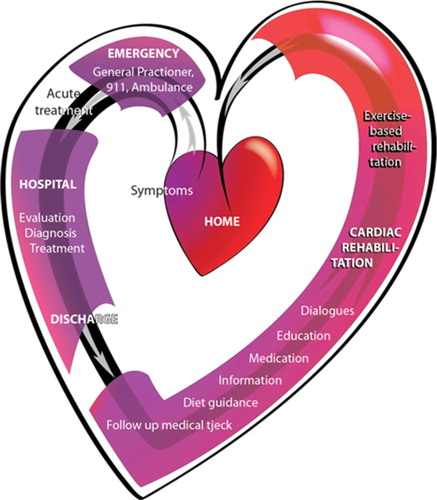Figures & data
Figure 1. Pathway in the standard treatment for patients with UAP or NSTEMI in Denmark.
The heart symbolizes a journey which the patients experience according to the findings of this study. The pathway is structured as a flowchart according to the guidelines from the National Heart Plan (Sundhedsstyrelsen, Citation2013). When CHD is suspected, acute admission to the hospital is initiated as the administration of medicine and a search for a diagnosis is started. Within 72 h after the onset of symptoms, the coronary arteries are examined by percutaneous coronary interventions (PCI), and angioplasty or stenting are performed if relevant and possible. Discharge from hospital often occurs 1–3 days after the invasive procedure. Subsequently, outpatient cardiac rehabilitation (CR) for approximately 12 weeks is offered at the hospital. In Region Zealand (where this project took place), CR consists of exercise-based cardiac rehabilitation (ECR) offered as a physiotherapist-guided joint physical training (8 weeks); individual consultations with doctors, nurses, physiotherapists and/or dieticians (based on individual needs); and a group-based psychosocial education session (a 1-day session of 6½ h). Produced by the primary author©.

Table I Demographic data of the participants.
Table II The set-up for the group-based cardiac rehabilitation.
Table III An example of the structural analysis.
